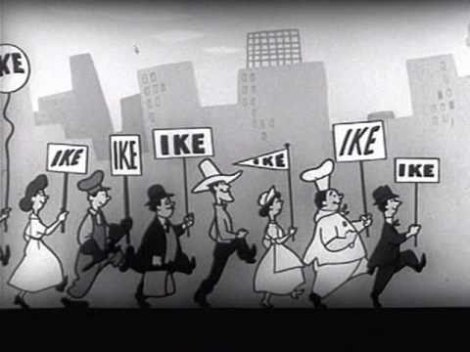In 1956 Ike and Adlai faced off again for the presidency. This election marked the creation of the five-minute spot. Adlai’s campaign had a series of five-minute spots that positioned him as a family man and were more informal than the previous ads. The five-minute spots were less expensive than the 30-minute broadcasts bought by candidates before and allowed candidates to reach more people. This campaign displayed a new emphasis on the personality of candidates in contrast to past ads based on accomplishments.
Many people regard 1960 as the year that opened the modern era of the presidential campaign, as we know it. JFK and Nixon ran very different campaigns in an election that displayed the new importance of television in politics. Kennedy’s campaign produced an advertisement in which his wife Jackie spoke Spanish. This is one of the earliest examples of advertisements targeting niche audiences such as the Hispanic population. This ad also displays the new spotlight on family members during campaigns. Kennedy showed a 30-minute documentary style ad in West Virginia to persuade voters, this method proved very effective. Nixon’s campaign involved ads where he talked directly to the camera about his strict stance against communism. Nixon’s ads are an example of the Commander-in-Chief style that has stayed popular among Republican campaigns. The youth and charisma Kennedy’s advertisements communicated contributed to his victory. 1960 was the year that physical appearance of candidates became crucial to winning.
The fear of nuclear war played a major role in the 1964 campaign advertisements. In this election Lyndon B. Johnson’s campaign released the first fear ad. These ads attempt to use scare tactics to shock and motivate voters. The Johnson advertisement featuring a little girl pulling petals off of a daisy is one of the most famous ads to date. Goldwater’s campaign attempted counterattack ads to Johnson’s fear ads but were not influential enough. This election was the first year candidates used many negative ads. These negative ads focused on defining the opponent rather than defining the candidate sponsoring the advertisement.
